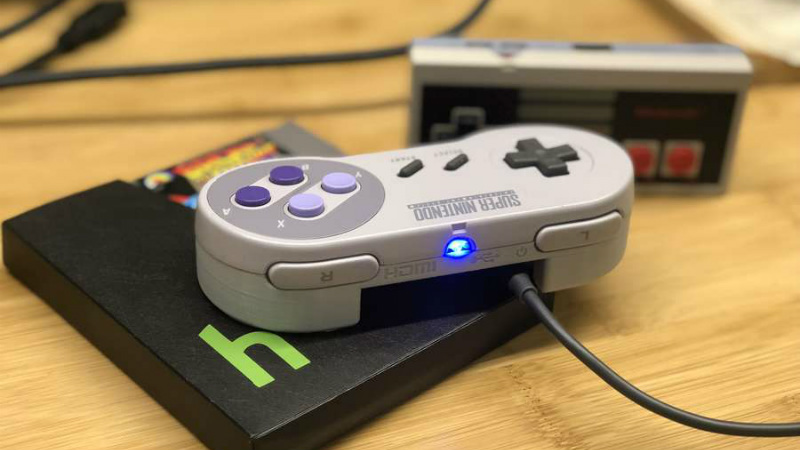We’re no stranger to seeing people jam a Raspberry Pi into an old gaming console to turn it into a RetroPie system. Frankly, at this point it seems like we’ve got to be getting close to seeing all possible permutations of the concept. According to the bingo card we keep here at Hackaday HQ we’re just waiting for somebody to put one into an Apple Bandai Pippin, creating the PiPi and achieving singularity. Get it done, people.
 That being said, we’re still occasionally surprised by what people come up with. The Super GamePad Zero by [Zach Levine] is a fairly compelling take on the Pi-in-the-controller theme that we haven’t seen before, adding a 3D printed “caboose” to the stock Super Nintendo controller. The printed case extension, designed by Thingiverse user [Sigismond0], makes the controller about twice as thick, but that’s still not bad compared to modern game controllers.
That being said, we’re still occasionally surprised by what people come up with. The Super GamePad Zero by [Zach Levine] is a fairly compelling take on the Pi-in-the-controller theme that we haven’t seen before, adding a 3D printed “caboose” to the stock Super Nintendo controller. The printed case extension, designed by Thingiverse user [Sigismond0], makes the controller about twice as thick, but that’s still not bad compared to modern game controllers.
In his guide [Zach] walks the reader through installing the Raspberry Pi running RetroPie in the expanded case. This includes putting a power LED where the controller’s cable used to go, and connecting the stock controller PCB to the Pi’s GPIO pins. This is an especially nice touch that not only saves you time and effort, but retains the original feel of the D-Pad and buttons. Just make sure the buttons on your donor controller aren’t shot before you start the build.
Adding a little more breathing room for your wiring isn’t the only reason to use the 3D printed bottom, either. It implements a very clever “shelf” design that exposes the Pi’s USB and HDMI ports on the rear of the controller. This allows you to easily connect power and video to the device without spoiling the overall look. With integrated labels for the connectors and a suitably matching filament color, the overall effect really does look like it could be a commercial product.
The SNES controller is an especially popular target for hacks and modifications. From commercially available kits to the wide array of homebrew builds, it there’s plenty of people who want to keep this legendary piece of gaming gear going strong into the 21st century
















gee-whiz, another “stick a pi in a case and call it a hack”
It’s quite polished. The case, being cleft in twain is a clever reworking of the original controller.
You’ll never find a middle ground with the people who complain about something being a hack or not. While everyone else is saying either saying to themselves hey that is neat or cool and or just carrying on with the rest of their lives the “not a hack” crowd will chime in and call anything short of Hacking the Gibson a non hack.
I guess hack is an overused term and an incorrect term coming from an IT background. These are basically mods that people come up with that are pretty cool.
What is “Hacking the Gibson?”
“Hack the Gibson, is a phrase which originated from the movie Hackers, and is generaly used either with some degree of compliment to another person, or as a sarcastic term directed at those who request the steriotypical ‘How to Hack’ posts, usually an unskilled, unwilling to learn ‘script kiddie’. “
I bought a anet a8 kit about a year ago and this is one of the first few things I printed. That being said, I quickly decided that this was a huge waste of time. The hdmi mini cord you need plugged into the system(of which most do not fit due to the surrounding rubber at the plug) as well as the power cord sticking out and running elsewhere, made this one of the most inconvenient rpi mods I can think of. Also I would rather leave my snes controllers as snes controllers and purchased some usb snes controllers.
hack the gibson, hack the gibson, spread that seed like a digital pimp,son.